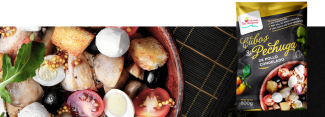Our Quality
Our high quality pattern is guaranteed in each process by strictly following the protocols and the most strict regulations to guarantee the quality and safety of all our products.
Image

- Regulations
- Regulations Certified by SE.NA.SA
Good Hygiene Practices (GHP)
Good Manufacturing Practices (GMP)
Sanitation Standard Operating Procedures (SSOP)
Hazard Analysis and Critical Control Points (HACCP)
In order to guarantee and enhance a high quality production, Granja Tres Arroyos puts forward a Hazard Analysis and Critical Control Points system. This working system is based on prevention. It is a voluntary preventive control method audited by government bodies, which results in an ongoing control over the production chain. The HACCP helps us produce safe food products. - CREHA Plan
- National Food Residue and Hygiene Monitoring National Plan.
SE.NA.SA tests the products being elaborated bimonthly - ArgenINTA Joint-Certification
- Certification System that controls the group of operations involving the breeding, raising, feeding, transport, processing, packaging and distributions of free-range chickens, ensuring their traceability from the first stages to the final destination in the gondola.
- ALO FREE
- Chicken production following specific regulations based on the protocol required to export to Switzerland (LDV-free certification)
- Trazability
- Thanks to the integration of all the production processes, from feeding to commercialization, we can fully trace our products.
- Frequently Questions
- How are chicken fed?
Our chickens eat cereals grown in the best Argentinian fields. Ninety per cent of the food that they take is composed of corn (60%) and soybean (30%). The rest of the food is composed of bran wheat, vitamins, amino acids, minerals, salt, gluten and flour.
The myth of hormones in chicken meat
There is no growing hormone for chickens sold in the world, and no hormone exists that could make chickens grow more.
Growth hormone for chickens is a specific one, produced by the chicken itself. It can only make chickens grow and there is no side effect over the human beings or over other species.
The other hormone that professionals and people in general suspect of is the oestrogen or any other hormone that could affect normal sexual development.
The chicken is raised in a very short period of about 50 days, reaching a growing level higher than 50g per day, an average weight of 2,600g when slaughtered and an average of 5,200g of feed intake. These results are due to an intense selection programme applied on the genetic lines for the breeding and their grandparents, in order to obtain breeders capable of transferring to their genetics to their descendants that "hybrid vigor".
It is also necessary to add the correct nutrition, that allows them to express all that genetic potential, effective preventive medicine and biosafety in order to prevent infectious and parasitic diseases. Not least, the care of environmental conditions is a key issue.
Source: CEPA









